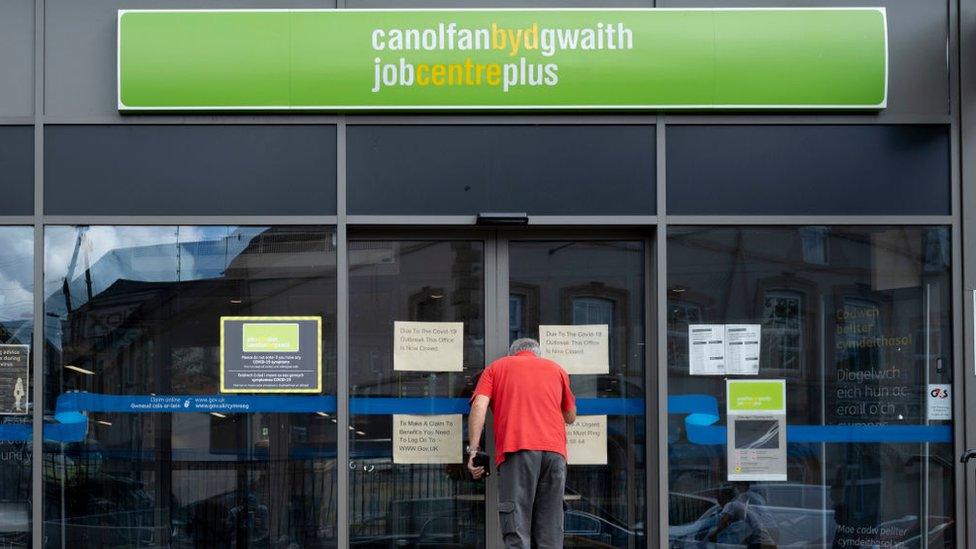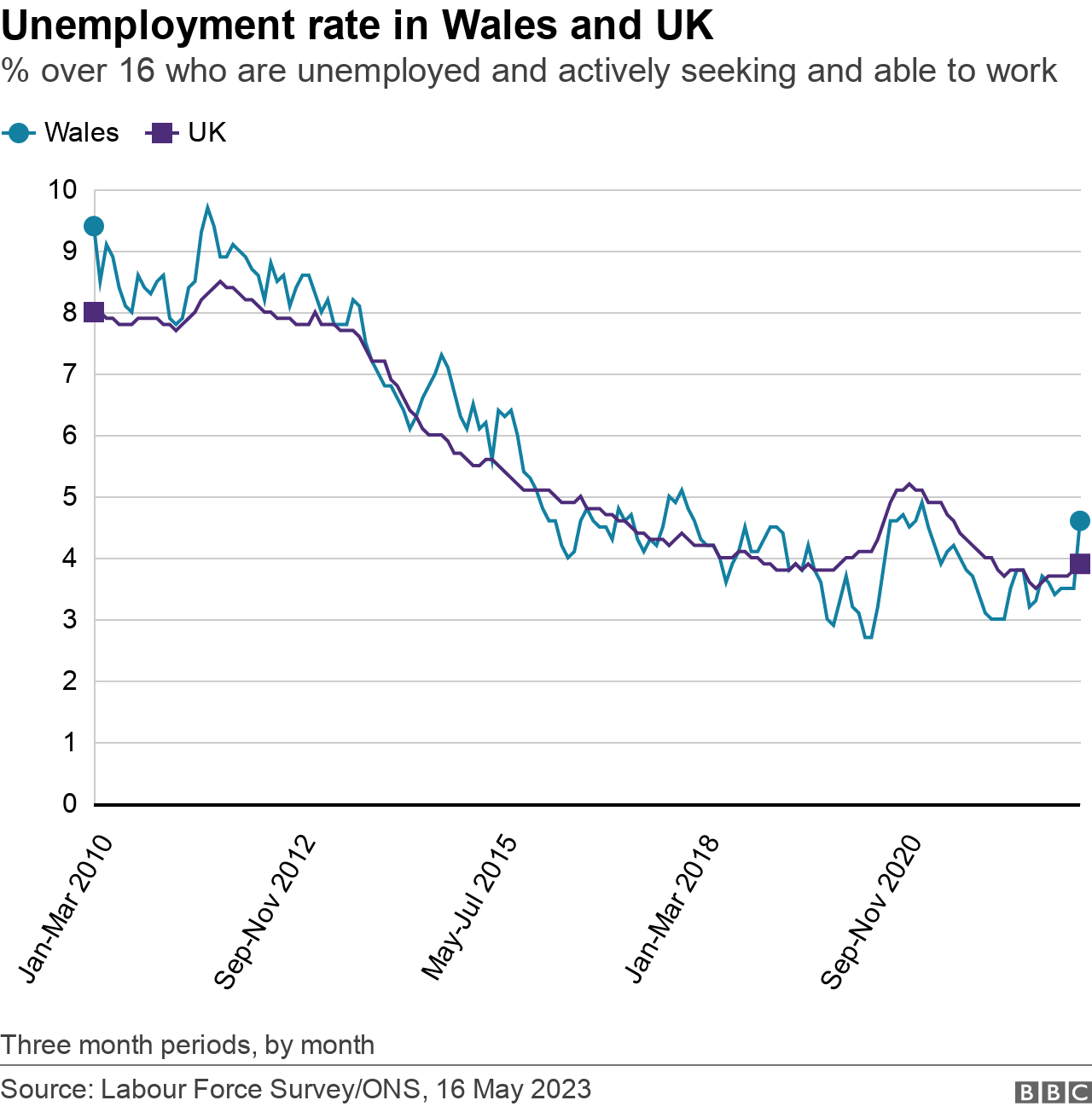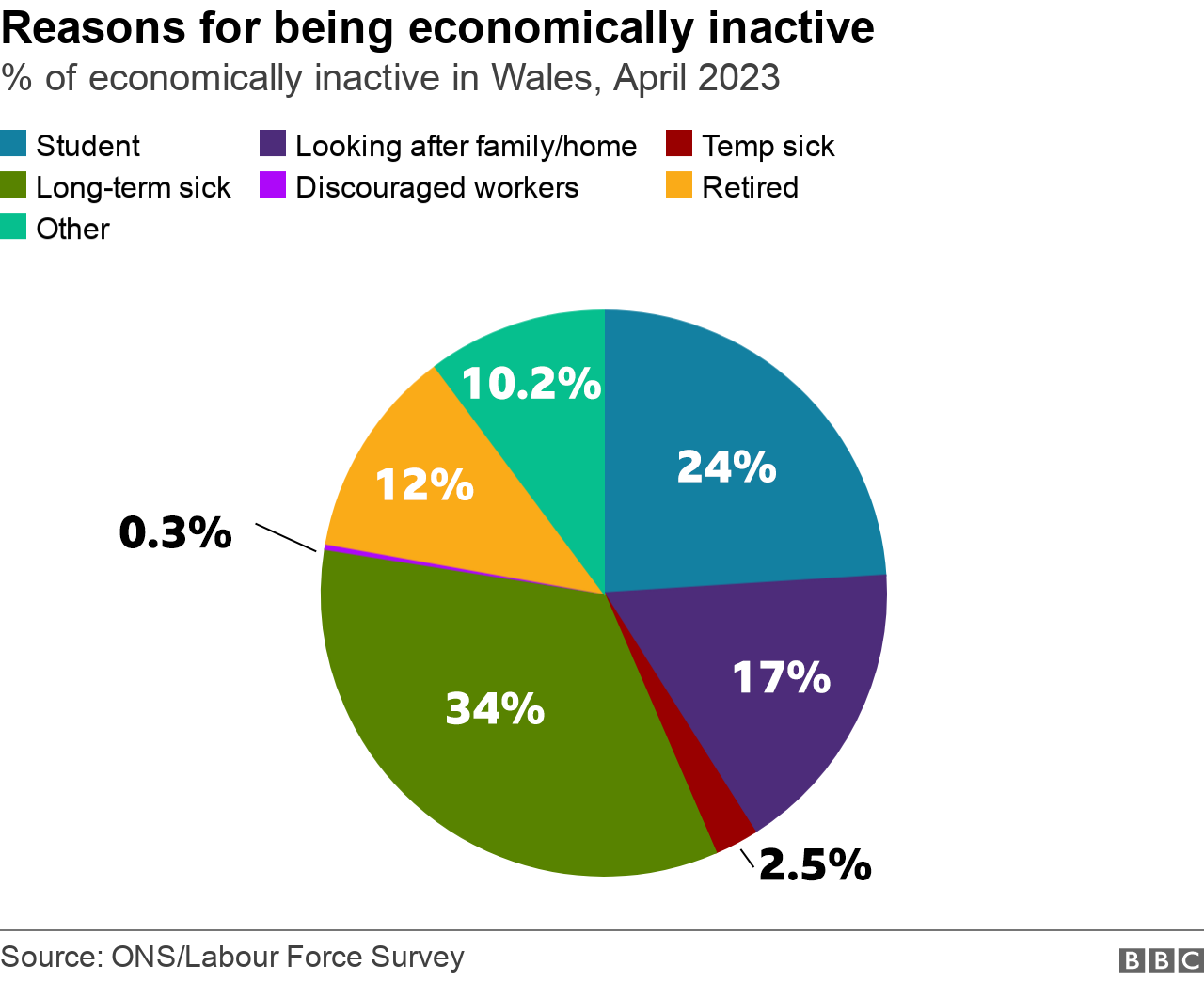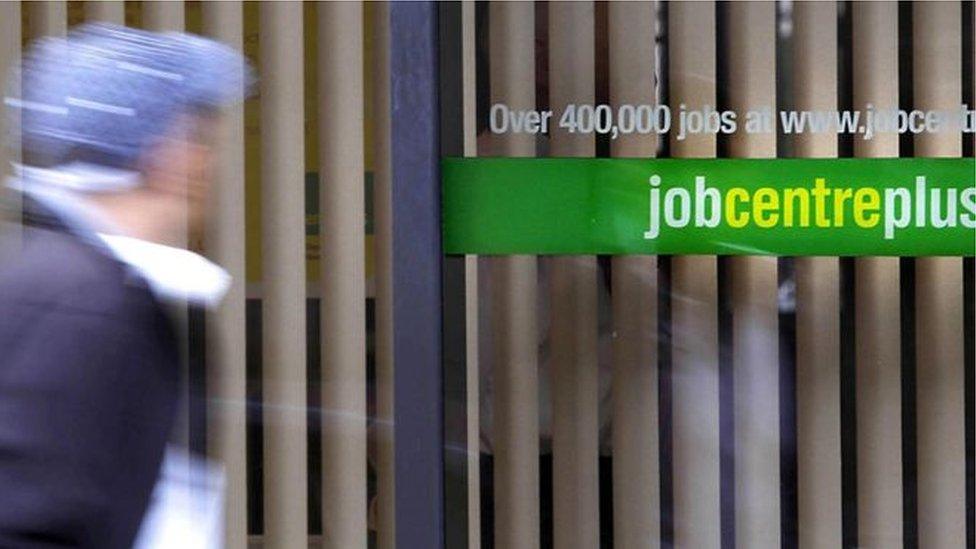Unemployment: Wales has highest year-on-year rise in UK
- Published

The latest figures, released by the ONS, are estimates that could be changed at a later date
Wales has seen the largest year-on-year increase in unemployment in the UK, new figures suggest.
The Office for National Statistics (ONS) estimates that unemployment rose to 4.6% in Wales for January to March.
But the ONS has urged caution, and said it is too early to tell whether this fluctuation is down to the way it collects data or the start of a "significant increasing trend".
The Welsh government said it is focused on reducing economic inactivity.
The figures for Wales represent a jump of 1.1% from October to December 2022, and an increase of 1.6% since the same January to March period last year.

These figures are estimates, and could be changed at a later date.
But if they are correct, this is the first time in five months that unemployment has been higher in Wales than the UK average.
Within the 4.6% is anyone in Wales aged 16 and over, looking or able to work.
The employment rate in Wales has also dropped to 71.5% from January to March this year - a decrease of 2.6% compared to the same period in 2022.
Economic inactivity in Wales, which refers to people of working age who are not in employment or seeking work, remains the second highest of the UK nations and regions at 24.9%.
While this figure is a decrease of 0.5% from October to December 2022, it has jumped up 1.4% from January to March 2022.
The main cause of economic inactivity is long-term sickness and disability. There are currently 159,000 people long-term sick in Wales, the most in almost 17 years and accounting for 34% of all economic inactivity.

Finally, Wales has the third highest rate of those seeking work among UK regions.
Only the West Midlands and London are higher, at 5.1% and 4.7% respectively.



It's important not to over-interpret what is just a single snapshot of the first three months of this year.
Any statistician will tell you that looking at trends - successive measures over a period of time - give a more reliable picture of what you're measuring than looking at a single set of figures.
Right now it's too soon to tell whether this apparent big increase in the unemployment rate for Wales is a statistical blip or a genuine problem.
Especially when you consider that for the last five months the Wales jobless rate has been lower than the UK average.
It's also worth bearing in mind that it's just one indicator among many of the health of the economy.
Another important one is economic inactivity and that trend remains stubbornly high in Wales - nearly 25% of the working age population is neither in work or looking for it.
That is a big problem for the Welsh economy and it doesn't seem to be getting any better.

Responding to the figures, Welsh Conservatives economy spokesperson, Paul Davies MS, said: "While there are pressures UK-wide, the data is clear. Wales is falling behind and continually decreasing no matter the UK picture.
"The Labour government hold the economic levers in Wales and have consistently failed to manage the high rate of economic inactivity here for the last 25 years.
"Successive Labour ministers have been distracted with vanity projects, like expanding the size of the Senedd. They should be focussed on delivering high-paying jobs for the people of Wales not more high-paying jobs for politicians."
A Welsh government spokesperson said it was committed to creating equality and prosperity in Wales, and was supporting businesses "to create more quality jobs, be more flexible and provide better-paid opportunities for workers".
They added: "Our focus remains on reducing economic inactivity. Our economic mission confirms the levers we do have to narrow the skills divide, support better jobs and in turn tackle poverty.
"Our plan for employability and skills prioritises people most in need of help. This includes supporting people to stay in work and those further away from the labour market to find employment."


- Published15 March 2022

- Published15 July 2021

- Published15 December 2020
